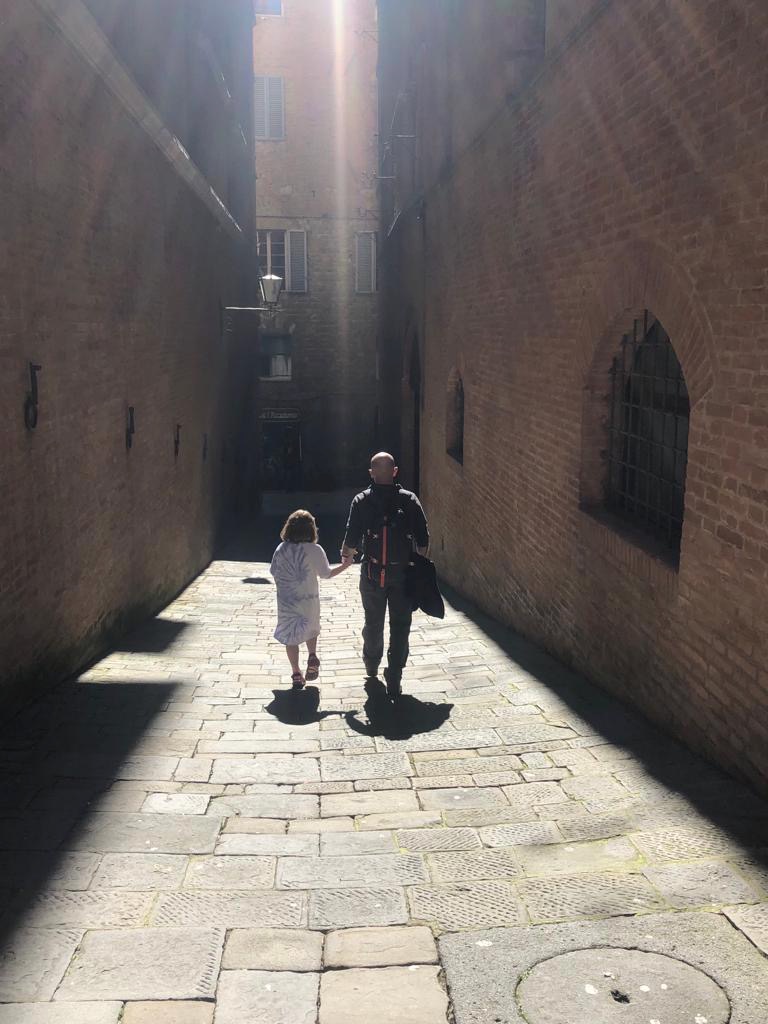Our favourite places to visit in Siena
Siena is a great city to visit for a day trip, but there is enough to see and enjoy in this strollable red-brick medieval city to keep culture enthusiasts happy for much longer trips.
Siena is a remarkable city. It was founded by the Etruscans and later enlarged by the Romans but its Golden Age is largely considered to be the period between 1260 and 1348. A steady and healthy flow of merchants and pilgrims travelling along the "Via Francigena", a medieval route that connected Northern Europe to Rome and the Holy Lands, fed the fortunes of the city.
Today most of the things you might want to visit are from this period, like the ambitious Cathedral, the remarkable and shell-like Piazza del Campo, the intricate cascading levels of the "Ospedale di Santa Maria della Scala" and of course, the world-famous twice-yearly Palio horse race held on the Piazza del Campo.
Here are our favourite things to see in Siena, in no particular order:
Visit Piazza del Campo
One of the most beautiful medieval squares in the world, Piazza del Campo is still the heart of the city. The famous Palio horse race is run twice a year around the square, with the harsh flagstones covered by tons of golden tufa sand to protect the horses hooves - and to soften the blow for the jockeys that fall from their mounts.
The square embodies the idea of civic space and secular power: when it was paved in 1349 it was divided into nine segments, representing the "Noveschi" or the Council of Nine. These were nine citizens, chosen by drawing lots, who would govern the city from the Palazzo Pubblico - the imposing building and tower that sits at the confluence of the nine segments of the Piazza.
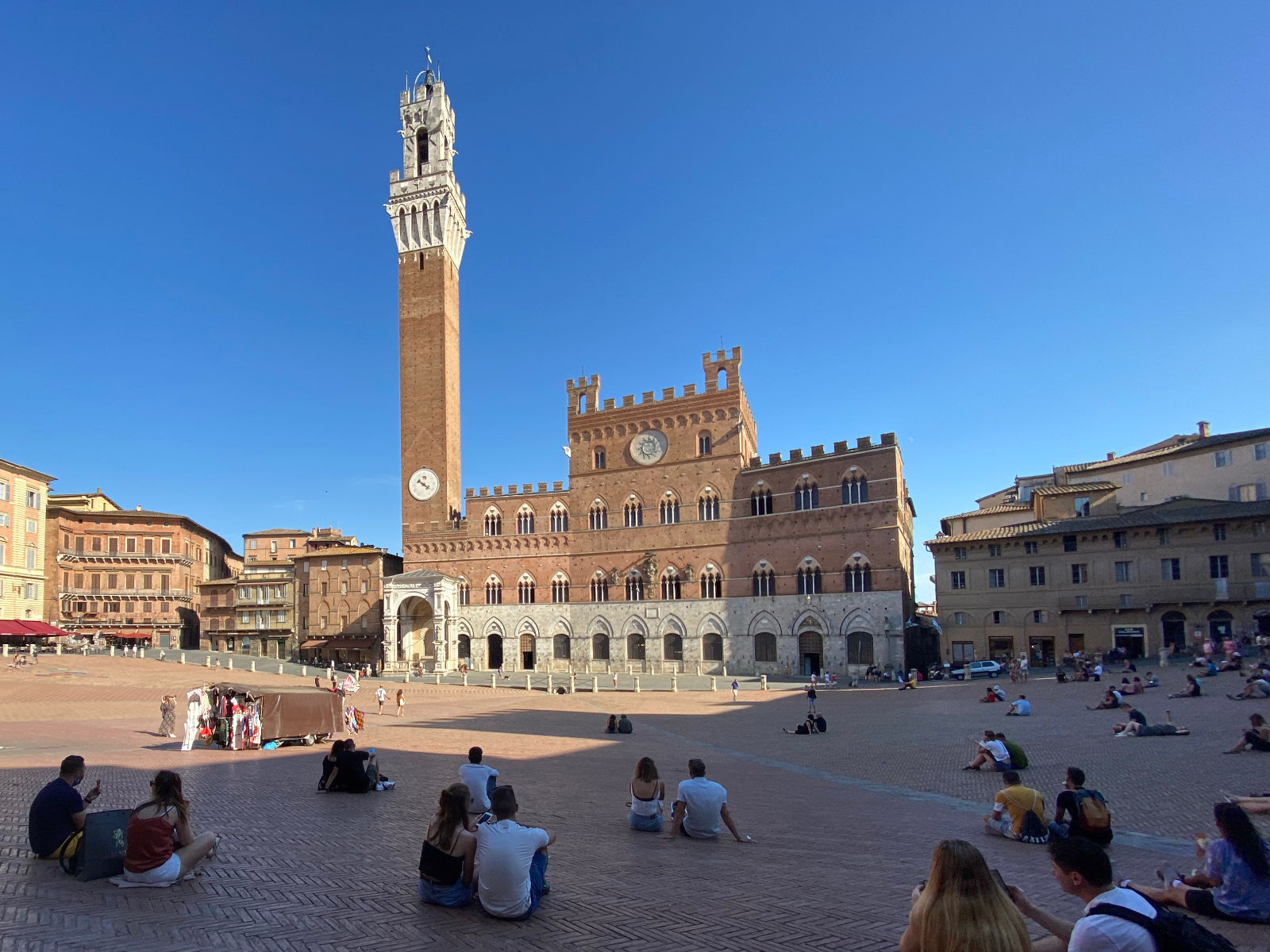
See the "Allegoria del Buon Governo"
It is definitely worth visiting the Civic Museum within the Palazzo Pubblico - but if you only have time to see one thing in the museum, make sure to see Ambrogio Lorenzetti's series of wonderful frescoes known as the "Allegories of Good and Bad Government".
These are a series of six paintings all describing the effects of Good and Bad Government on an idealised city and countryside largely based on Siena and they were painted between 1338 and 1339. They are remarkable firstly for having a secular theme; in a time when every other painting seems to be a Madonna with child and when art was used as a way to glorify God, these paintings are preoccupied with the here and now of earthly governance.
The paintings mark a shift towards humanism, towards a preoccupation with how to make our earthly lives better. Human actions are seen as something that has consequences, and humans therefore as agents of their own destiny. This marks a shift from the earlier centuries' view of humanity as a powerless victim to the unrolling of fate. It's a decisive moment in the development of Western European thought and of our democracies.
The most famous fresco is the "Buon Governo" which shows the benefits of good government, with a healthy city surrounded by a fertile and well-cared countryside. It is easy to recognise buildings of Siena in the painting and I like to think the countryside is that stretching out towards Sovicille, with the hills of Montagnola and Montestigliano in the distance.
By contrast, the "Cattivo Governo" has untended fields, hungry populace and buildings falling down. By some irony of positioning, the "Bad Government" painting has also suffered most over the centuries and is in a much worse state of repair than the others.
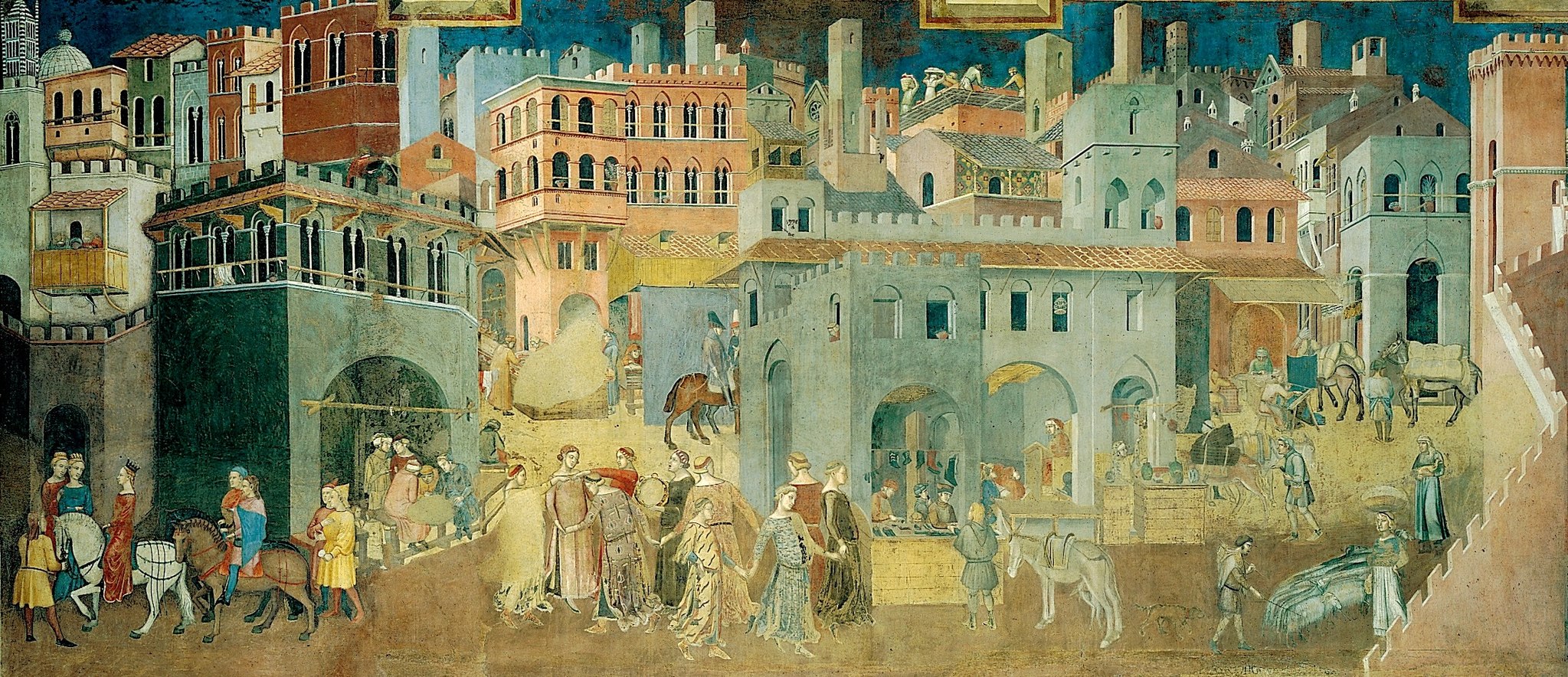
Climb the Torre del Mangia and see the unfinished medieval city
You're in the Palazzo Pubblico, why not climb the famous tower that overlooks the Piazza del Campo? It's a steep climb but you will get some fabulous views. If you look south-east from the tower (away from Piazza del Campo) you will see a section of green fields and allotments that comes right into the city, very close to the Palazzo Pubblico itself. A road called "Via di Porta Giustizia" runs through the middle of these fields but there is no "Porta Giustizia".
The whole area south of Piazza del Campo had been earmarked for development in the early fourteenth century, as well as an extension to the city walls and a new gate. It was all brought to a sudden stop when the plague swept through the city in 1348, halving the city's population and slamming the brakes on the city's ambition. There are other examples of this cataclysmic event in the city's history when you walk around - in some ways Siena is a city that was frozen in time for centuries, after the Black Death stripped it of manpower and of its fortune.
Visit the unfinished Cathedral
The Cathedral in Siena is impressive, but wasn't considered large or impressive enough for the growing city in the early fourteenth century, so the population set about building a larger, bigger, better, taller and generally shinier new cathedral. Sadly, as with the urban expansion project of Porta Giustizia, the plague stopped play. Work was brought to a halt in 1348 and today only the unfinished nave remains.
You can visit the Museo dell'OPA and climb to the top of this narrow, high wall - the views are spectacular. See below for a sketch I made from the wall top a while ago.

Duomo di Siena
The Cathedral the city already has remains fabulous enough for most of us today, with its stripy marble facade, rich ornate interiors and golden ball and cross on the very top of the cupola.
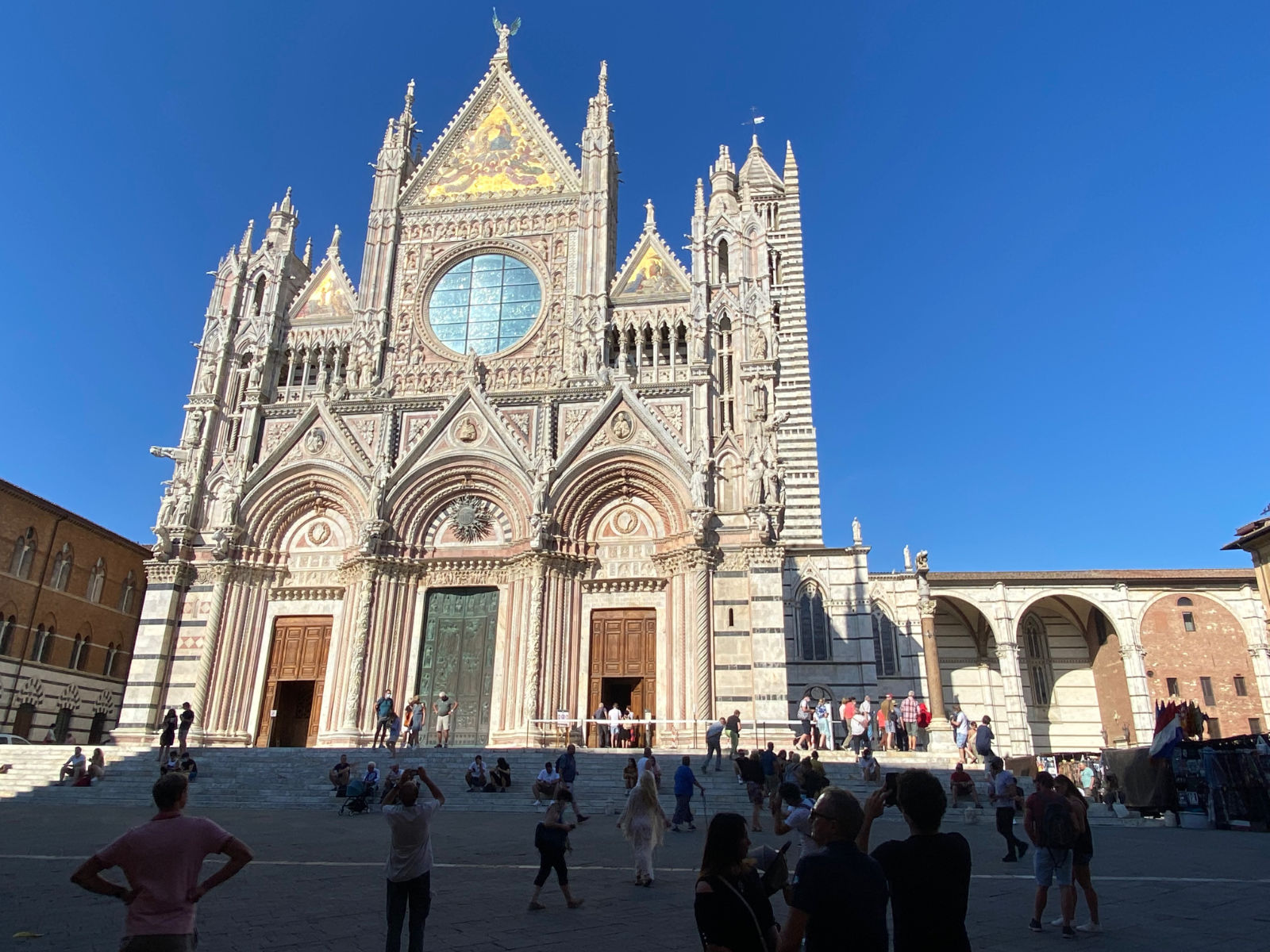
The floors of the Cathedral are worth looking out for, decorated with biblical scenes in complicated marble intarsia. Two scenes are my favourites
1. The massacre of the innocents.
Always a popular scene with medieval artists, this one is approached with real gusto and plenty of gore.
2. Hermetes Trismegistus
This is an unusual figure to find immortalised in the marble of a medieval cathedral. Hermes Trismegistus is a curious amalgam of two figures from antiquity, the Greek God Hermes and the Egyptian god Thoth, both seen as experts in astrology, alchemy and other occult practices. In the early Renaissance he was considered by some Italian writers to be a pagan prophet who foresaw the coming of Christianity, part of a thread of a single, true theology believed to thread through all religions. According to this theory original religious knowledge was given by God to man in antiquity and then passed through a series of prophets, which included Zoroaster and Plato. The inclusion of the figure of Hermes Trismegistus on the floor of Siena Cathedral shows the sophistication of Sienese thinkers, as well as their inclusivity: in order to demonstrate the verity of the prisca theologia (the single true theology) Christians appropriated the Hermetic figures and teachings for their own purposes.
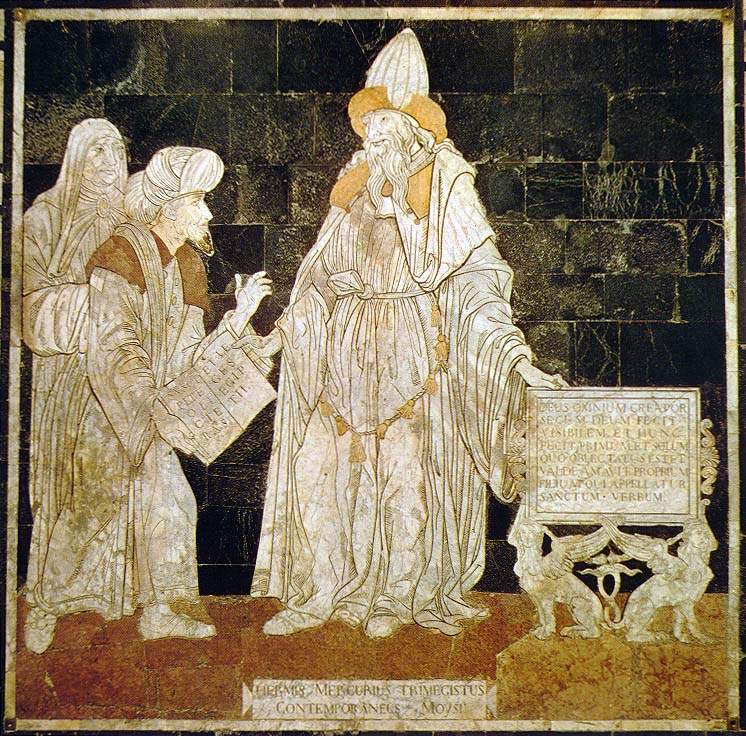
Ospedale (now Museo) di Santa Maria della Scala
The flow of pilgrims up and down the Via Francigena led to the founding and development of this 'Spedale' - hospice or hospital - for travellers and pilgrims. It is one of the oldest in the world, first mentioned in March 29, 1090.
Today it has been transformed into a beautiful museum and is absolutely worth exploring. The top floor, on the same level as the Cathedral, is large, spacious and richly decorated.

The next levels descend down the side of the hill the building has grown on, getting older the further you descend. At the very base you will find tunnels carved through Tufa rock in Roman times, and tiny chapels decorated with golden crosses and varnished skulls.

Water fountains and tunnels
Unusually for such an important city, Siena was not founded next to river and as it grew through the first centuries of the millennium, it struggled to get enough water into the city. The solution was ingenious: kilometres and kilometres of tunnels were carved under the city to collect rainwater and to unite the few springs there were. You can read more about the tunnels under the city here: Bottini in Siena.
On the surface, the city's engineers built a series of beautiful 'fonti' where the populace could gather water. The most famous is in Piazza del Campo - Fonte Gaia - but there are others worth visiting dotted around. My personal favourite is Fonte Branda, in the narrow gulley below Santa Caterina.
A little further out of town, Fonti di Pescaia has now been turned into a 'Museum of Water' Museo dell'Acqua and has lots of information on how the bottini (water tunnels) and the fonti were conceived and built.

Where to stay around Siena
The landscape around Siena is classically Tuscan, and a delight. Have a look here to find a villa to rent near Siena.

